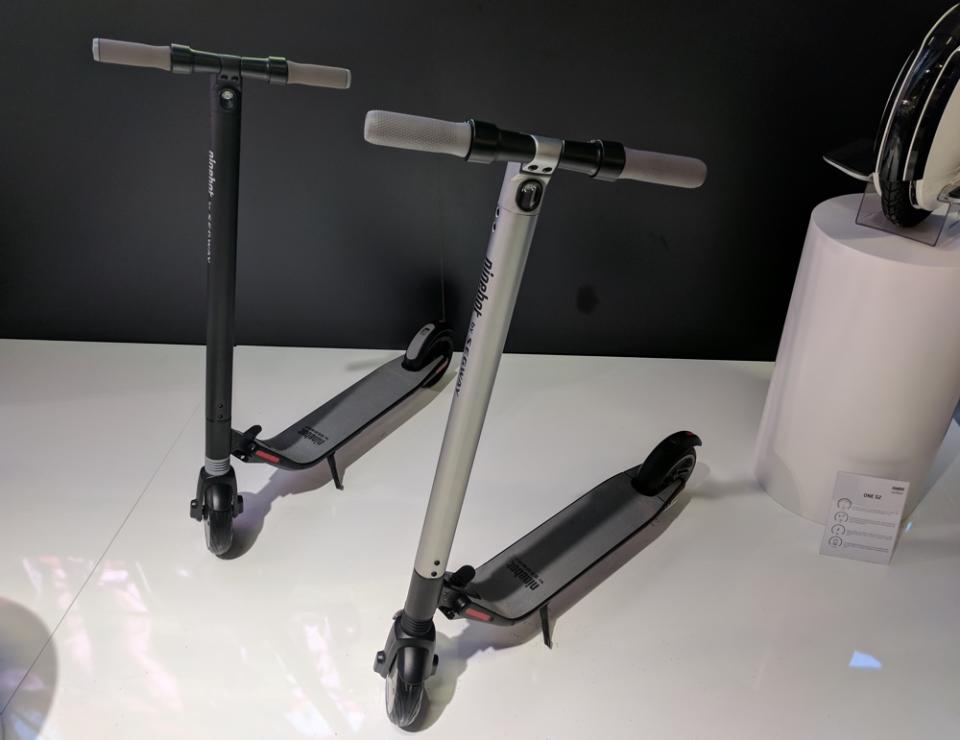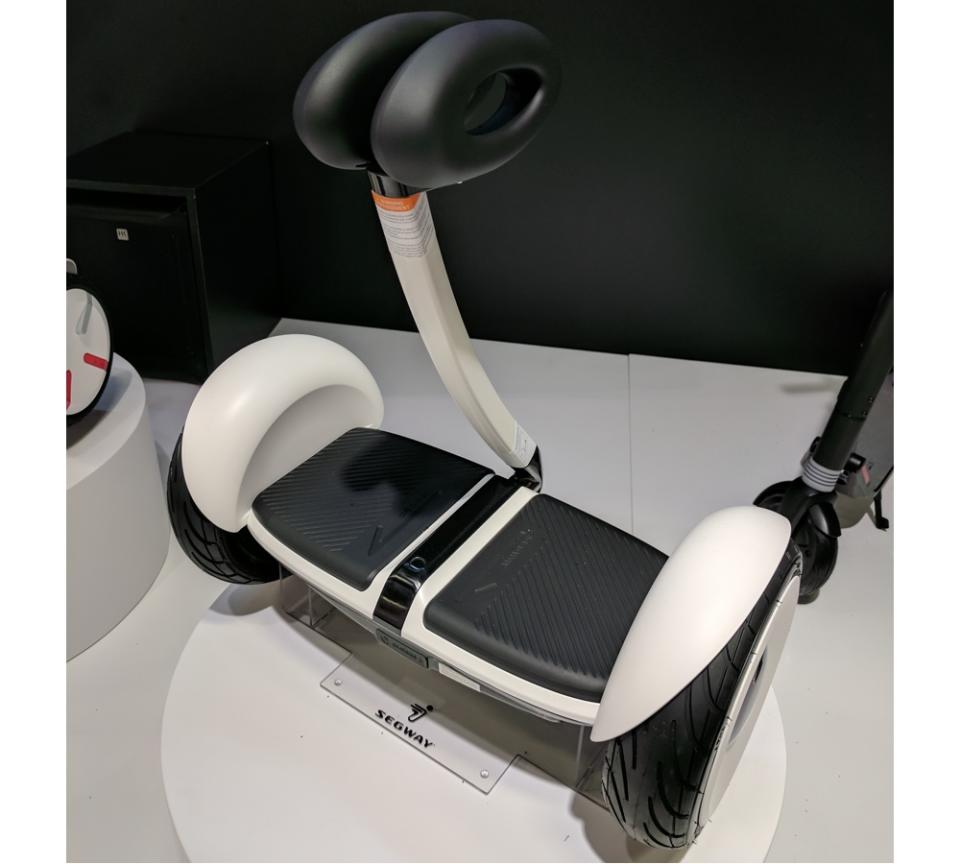Segway wants to do more than transport tourists and mall cops

BERLIN — Segway doesn’t want to be thought of as merely a toy for tour groups and a tool for mall cops, so it’s getting back into the personal-transportation business — with a pair of new electric scooters.
The new Ninebot ES1 and ES2 that the company unveiled at the IFA trade show here don’t balance themselves using a sophisticated combination of sensors and software. Nor do they look particularly high-tech from a distance, since the basic kick-scooter concept has been around for a century or so.
But unlike the two-wheeled personal transporter that Segway debuted in 2002, these devices don’t cost almost $5,000.
Scoot, scoot, scoot
That price kept the original Segway a curiosity to most, even as police and security forces began buying them and tourism companies started using them to haul visitors around cities in a way they most likely couldn’t enjoy at home.
(At a press conference here Thursday morning, Segway Europe president Dennis Hardholt said more than 6 million people a year experience its self-balancing scooters via city tours.)
Subsequent, smaller models have come down in price but have also lacked the same potential commuting utility, making a lie out of Apple (AAPL) founder Steve Jobs’ one-time prediction that the Segway would force the redesign of cities.
With the ES1 and ES2, due in the fourth quarter of 2017 for $450 and $550, respectively, Segway aims to solve its original use case of personal transportation of up to 5 kilometers, or just over 3 miles. The ES1 tops out at almost 12.5 miles an hour, while the ES2 can hit 15 mph. Both can run about 12.5 miles on a charge, or almost 28 miles with the addition of a second battery pack.
Each scooter includes anti-lock brakes and cruise control, while the ES2 adds shock absorbers and a fancy set of LEDs on the bottom of its magnesium-alloy frame. You can fold each one up to fit in a trunk or carry it on a train.
The price is cheap compared to a quality bicycle — the two-wheeled conveyance around which we actually have redesigned many city streets and sidewalks. But bikeshare services have a lower upfront cost and no worries about where to park the thing.
Meanwhile, the market for electrically-assisted scooters (both the sort with two tandem wheels and the self-balancing variety with side-by-side wheels — often and inaccurately called “hoverboards”) features an enormous array of cheaper options. One such vendor, the Chinese firm Ninebot, bought Segway in 2015.
A Segway for kids and one that can follow you home
At IFA, Segway introduced two other scooters that look more like its namesake product, with two wheels on either side of foot plates and a knee-height control bar that serves the same function as the original Segway design’s handlebars.

The miniLITE, designed for kids and teens, should be its cheapest self-balancing model yet; Hardholdt said it should sell for $400 or so starting in the fourth quarter. The company’s current least expensive model is the $700 miniPRO. Smaller and designed to be more forgiving of inexperienced riders than the miniPRO, the miniLITE goes no faster than 10 mph and no farther than 11 miles and change.
The miniPLUS, meanwhile, can serve as a bit of a toy or a pet in addition to carting you around as fast as 12 mph and as far as almost 22 miles. If personal transportation gets boring, you can drive it via Bluetooth with a smartphone app or instruct it to follow you home. It will also accept an optional 4K camera, because no consumer device seems complete these days without an ultra-high-definition video-capture system.
That won’t come as cheap, though; Hardholdt predicted a $1,000 price tag at its Q4 debut. That may be a tough sell, but at least nobody’s trying to suggest this two-wheeled conveyance will change the world.
More from Rob:
Hate and violence around the globe? There’s an app for that.
Samsung challenges Apple Watch with its new Gear Sport smartwatch
These college students are vying to build Elon Musk’s hyperloop
A massive EU privacy rule could bring an unexpected benefit for US consumers
Apple’s decision to drop privacy apps in China might not be the last of its kind
Email Rob at rob@robpegoraro.com; follow him on Twitter at @robpegoraro.

